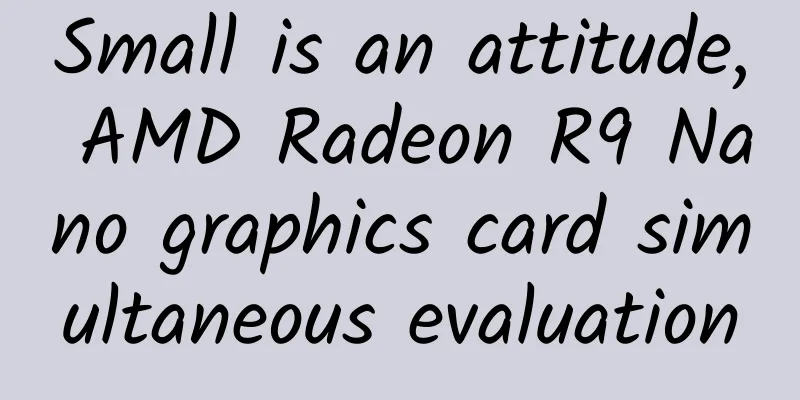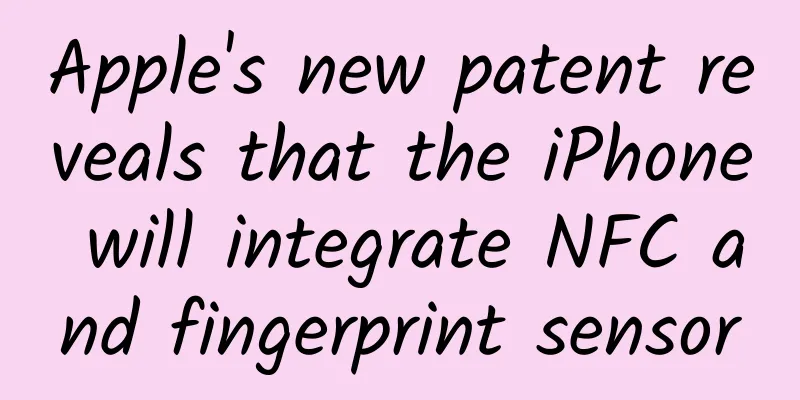Small is an attitude, AMD Radeon R9 Nano graphics card simultaneous evaluation

|
When AMD launched the Radeon R9 Fury X graphics card, its short card design gave hope to many gamers who like high-performance Mini-ITX cases. However, since the R9 Fury X graphics card uses an integrated water-cooled radiator, it still has certain requirements for the case. For this reason, many gamers have been looking forward to the R9 Fury X graphics card with an air-cooled radiator. AMD did not disappoint these gamers. The flagship graphics card that maintains a short card shape and uses an air-cooled radiator was officially released at the end of last month, which is the Radeon R9 Nano graphics card. The Radeon R9 Nano graphics card is only 15cm long, 2cm shorter than the width of the Mini-ITX motherboard, which means it has strong installation compatibility with the Mini-ITX chassis. Basically, as long as the Mini-ITX chassis can provide two full-height PCI slots, the R9 Nano graphics card can be easily installed. For players who are still struggling with which graphics card to choose for the Mini-ITX platform, the appearance of R9 Nano is undoubtedly a bright spot. Although the R9 Nano graphics card is not named "Fury", it does belong to the R9 Fury series and is also built on the Fiji core. However, unlike the streamlined R9 Fury graphics card, the R9 Nano graphics card uses the full version of the Fiji core. The hardware specifications are basically the same as the R9 Fury X graphics card. It also has 4096 stream processors, 256 texture units, 64 ROP units and is equipped with 4096-bit 4GB HBM video memory. However, the cooling method has changed from water cooling to air cooling, and the frequency parameters are slightly lower than the R9 Fury X graphics card. The core frequency of R9 Nano can reach up to 1000MHz, which is 50MHz lower than the highest core frequency of R9 Fury X, and the video memory frequency remains unchanged at 500MHz. However, don't underestimate the 50MHz difference. According to data released by AMD, the TDP of the R9 Nano graphics card is only 175W, and only a single 8pin power supply interface is needed to work stably, while the TDP of the R9 Fury X graphics card is as high as 275W, and dual 8pin power supply interfaces are needed. Thanks to the reduction in TDP and power consumption, the heat generation of the R9 Nano graphics card is better controlled, and only a single fan radiator is needed to maintain normal operating temperature. AMD currently prices the Radeon R9 Nano graphics card at 5,099 yuan to 5,999 yuan, which is already at the same level as the R9 Fury X and leaves manufacturers with a lot of room for flexibility. But does the value match the price? Let's take a look. AMD Radeon R9 Nano Graphics Card Overview From various previous leaks, we already know that the R9 Nano graphics card is very suitable for the Mini-ITX platform, but after actually getting it in hand, we are still somewhat shocked by its "short and powerful" size. Compared with the flagship graphics card of Dongmo's 10-inch length, the R9 Nano graphics card with a length of only 15cm makes it hard to believe that this is a flagship product. The Radeon R9 Nano graphics card uses a fully covered air-cooled radiator. Although the metal back cover and LED lights are simplified compared to the R9 Fury X graphics card, it still uses a metal air duct design, which is very sturdy and has a very good texture. The display interface maintains the configuration of the R9 Fury X, with 3 DP interfaces and 1 HDMI 1.4 interface. The LED lights on the R9 Fury X graphics card are not used on the R9 Nano graphics card, and the Radeon logo is just an ordinary logo. There is a toggle switch on the top of the graphics card, which is the dual BIOS switch of the graphics card. According to our test, the two BIOS built into the graphics card are basically the same in performance. The TDP of the R9 Nano graphics card is only 175W, so it only needs to be configured with an 8-pin external power supply interface to meet the power supply needs of the graphics card. The biggest advantage of the R9 Fury series graphics cards using HBM video memory is their high integration. The R9 Nano graphics card is no exception. With a length of 15cm, it is truly "short and powerful". The largest area in the middle is naturally the Fiji core using HBM video memory, and the 4-phase core power supply is configured on the right side of the graphics card. In terms of radiator, the R9 Nano graphics card uses a single-fan radiator with two pure copper heat pipes, a pure copper base and a 9cm cooling fan. The heat pipes and the base are welded to the aluminum fins. In addition to dissipating heat for the GPU, the power supply part can also be cooled through the metal bracket. Test platform and related setting instructions Since the Radeon R9 Nano graphics card is very suitable for the Mini-ITX platform, we assembled a mini platform this time to test the R9 Nano graphics card. The test platform uses a Core i7-4770K processor overclocked to 4.0GHz, an ASUS Maximus VII Impact motherboard, dual-channel DDR3-2400 16GB (8GB*2) memory and a Sandisk Extreme Pro 240GB solid-state drive. The case is a Lian Li PC-Q17 WX Black (ROG version), and the power supply is a Vantec Platinum 700W. In addition to the R9 Nano graphics card, we also used the public version of the GTX 980, the non-public version of the R9 Fury, and the mini version of the GTX 970 graphics card of similar size for comparative testing. The test items were mainly 3DMark and popular games, and the graphics card drivers used were GeForce 355.82 WHQL and the Catalyst 15.201.1102 driver that comes with the R9 Nano graphics card. In addition, due to time constraints, we only conducted comparisons at 1080P resolution in this simultaneous evaluation, and have not yet conducted tests at 4K resolution. If necessary, we will supplement the corresponding results later. R9 Nano vs. GTX 970: Which is the mini platform king? For the R9 Nano graphics card, the GTX 970 graphics card is obviously not its opponent. The reason why we only compare the GTX 970 graphics card this time is mainly because the highest performance Mini-ITX platform graphics card in the current NVIDIA product camp is the GTX 970, so this time it is a battle between graphics cards of the same size. The Radeon R9 Nano graphics card with a complete Fiji core structure is undoubtedly far ahead of the GTX 970 graphics card in performance. At 1080P resolution, the R9 Nano graphics card is about 20% ahead of the GTX 970 graphics card in comprehensive performance. There is no doubt that the R9 Nano graphics card is now the performance king in the Mini-ITX platform. R9 Nano vs. R9 Fury: Power consumption is prioritized, and both are on par in performance In the comparison between R9 Nano and R9 Fury graphics cards, we chose ASUS Strix R9 Fury Gaming graphics card, which is a popular non-official version of R9 Fury graphics card. In our test, the R9 Nano graphics card with a complete hardware architecture failed to outperform the R9 Fury graphics card with a streamlined architecture, and was 5% behind the latter in comprehensive performance. This performance seems to be inconsistent with the hardware specifications of the two. In fact, we have verified the operation of the R9 Nano graphics card. In fact, although the R9 Nano graphics card claims that the core frequency can reach up to 1000MHz, it rarely reaches such a high frequency during the game, and most of the time it fluctuates around 800MHz to 900MHz. The R9 Fury graphics card can always maintain a core frequency of 1000MHz, so the latter's performance is the same as or even slightly higher than the R9 Nano graphics card. R9 Nano vs. GTX 980: Performance is comparable at 1080P In the battle between R9 Nano and GTX 980 graphics cards, the performance of the two graphics cards is basically evenly matched. R9 Nano has a slightly greater advantage in 3DMark test and Ashes of the Singularity DX12 mode, but overall R9 Nano is only ahead by about 1%, and the two can basically be regarded as the same level. However, according to our earlier experience in the comparison between R9 Fury X graphics card and GTX 980 graphics card, R9 Nano graphics card should have a greater gap with GTX 980 graphics card in 4K resolution environment. R9 Nano: Great improvement in power consumption and excellent heat control Compared with NVIDIA's Maxwell architecture, the most criticized point of AMD's two generations of graphics cards is their high power consumption, and even the R9 Fury X graphics card can hardly escape this problem. However, this time the TDP of the R9 Nano graphics card has been greatly reduced to 175W, so will it have a reversal in power consumption? From our test results, the R9 Nano graphics card's standby power consumption is 65W, slightly higher than the GTX 970/980 graphics card, but basically negligible. In the 3DMark Fire Strike Demo mode, the R9 Nano graphics card's full load power consumption is 256W, which is still nearly 30W higher than the GTX 980 graphics card, and nearly 50W higher than the GTX 970. However, compared with its own products, the R9 Nano graphics card has indeed made great efforts in power consumption control. The full-load power consumption of the R9 Fury graphics card is close to 300W, which is nearly 40W higher than the power consumption of the R9 Nano graphics card. Therefore, although the power consumption performance of the R9 Nano graphics card did not reverse the NVIDIA camp products, it has made great progress in itself. As for heat generation, we didn't have high hopes for the R9 Nano graphics card's radiator, but the final result gave us a small surprise. In the sealed box test environment, the core temperature of the R9 Nano graphics card finally remained at around 77 degrees Celsius, and the core frequency of the graphics card fluctuated around 900MHz. The fan was very quiet, and if the case was well sealed, it would basically be inaudible. As for the fan speed of 10,000 rpm displayed on GPU-Z, we can say that this is definitely a misidentification, because for a 9cm diameter fan, if it really reaches the level of 10,000 rpm, the noise is probably not at the "blower" level but at the "turbofan engine" level, but in fact the R9 Nano graphics card has always been very quiet during work. We used a tachometer to measure the speed of the graphics card fan. The fan speed is only about 1500RPM in the standby environment, and only about 2000RPM in the full load environment. Conclusion: A small phone can also be a flagship For mid-to-high-end graphics cards to be mini models, power consumption and heat control are very important. NVIDIA performs better in this regard, so in recent years, N cards have a greater chance of appearing in mini mid-to-high-end graphics cards. However, before the launch of the R9 Nano graphics card, the highest-end model of air-cooled mini graphics cards was only the GTX 970. Although the performance is good, it is still not ideal for enthusiasts who like mini platforms. The launch of the R9 Nano graphics card this time gives these players a higher performance option. The current price of Radeon R9 Nano graphics card is 5099 yuan to 5999 yuan. AMD has left a lot of room for manufacturers. It is true that we have higher performance options at this price, such as R9 Fury X, GTX 980 Ti, etc. The cost performance of R9 Nano seems not high. However, we think that we can't look at this graphics card with the same eyes as before. R9 Nano represents more of an attitude. Its appearance proves that flagship graphics cards can also be made very small, and the performance of the mini platform can also be comparable to flagship PC. Our tests show that the Radeon R9 Nano graphics card has the same or even better performance than the GTX 980 graphics card, and even has a bigger gap with the other in the 4K resolution environment, which is completely worthy of its positioning as the "mini graphics card flagship". In addition, it has made great progress in temperature and power consumption compared with other products in the same family. Thanks to better power consumption and heat control, the R9 Nano graphics card can maintain stable operation even in a mini platform with unfavorable heat dissipation conditions. In addition, AMD stated that AMD's GCN architecture graphics cards currently have native hardware support for DX12 asynchronous computing, while N cards use software simulation, so AMD graphics cards will have technical advantages in the future. At the same time, thanks to the fact that both Xbox One and PS4 consoles use the AMD platform, AMD and game manufacturers will have in-depth cooperation in the future, especially in DX12 games, AMD will try its best to convert its technical advantages into actual performance advantages. Therefore, for gamers, the R9 Nano graphics card is far more than just a high-performance mini graphics card. It will accompany players to enjoy various new games in the future. As a winner of Toutiao's Qingyun Plan and Baijiahao's Bai+ Plan, the 2019 Baidu Digital Author of the Year, the Baijiahao's Most Popular Author in the Technology Field, the 2019 Sogou Technology and Culture Author, and the 2021 Baijiahao Quarterly Influential Creator, he has won many awards, including the 2013 Sohu Best Industry Media Person, the 2015 China New Media Entrepreneurship Competition Beijing Third Place, the 2015 Guangmang Experience Award, the 2015 China New Media Entrepreneurship Competition Finals Third Place, and the 2018 Baidu Dynamic Annual Powerful Celebrity. |
>>: MIIT: Economic Operation of the Automobile Industry in May 2024
Recommend
How much does it cost to develop a Shannan Chemical mini program? What is the quote for Shannan Chemical Mini Program development?
WeChat Mini Program is an application that users ...
How to operate limited-time flash sale events!
Limited-time flash sales are a marketing applicat...
The TV industry is moving towards segmentation: games become the biggest active variable
Since the development of China's television in...
Telecom Server Rental Price List
The price of server rental is affected by many fa...
3 factors that affect product promotion and conversion (Part 2)
Many adjustments seem simple, but the leverage ef...
When will Qingdao express delivery resume in 2022? When will the blockade be lifted?
According to the latest news, from 0:00 to 24:00 o...
NFC interface adaptation, reading and writing tags (Note and Galaxy series)
Source code introduction For NFC models, you can ...
How can I make my promotion rank around the third position on the left? How do I know my PPC position?
Promotion is in the third position on the left. T...
Why can’t I spend my money on bidding ads such as information flow ads?
I believe that friends who have placed informatio...
iOS scams collection
When I was making my first iOS app, I encountered...
"Top Model King" wants to surpass the Crown Princess, LeTV needs to show its true ability again
If someone asks what is the most popular online d...
How do artificial intelligence phones change our lives? Let's see what mobile phone manufacturers have done?
From "intelligent voice assistants" tha...
Case analysis | The entire process of the 3-yuan group buying activity at Zuoyebang
Now all the major online education companies are ...
Huayi Brothers failed to acquire Hero Entertainment. Its frequent successes and failures in mergers and acquisitions hide greater crises.
After being suspended for 74 days, Huayi Brothers...









